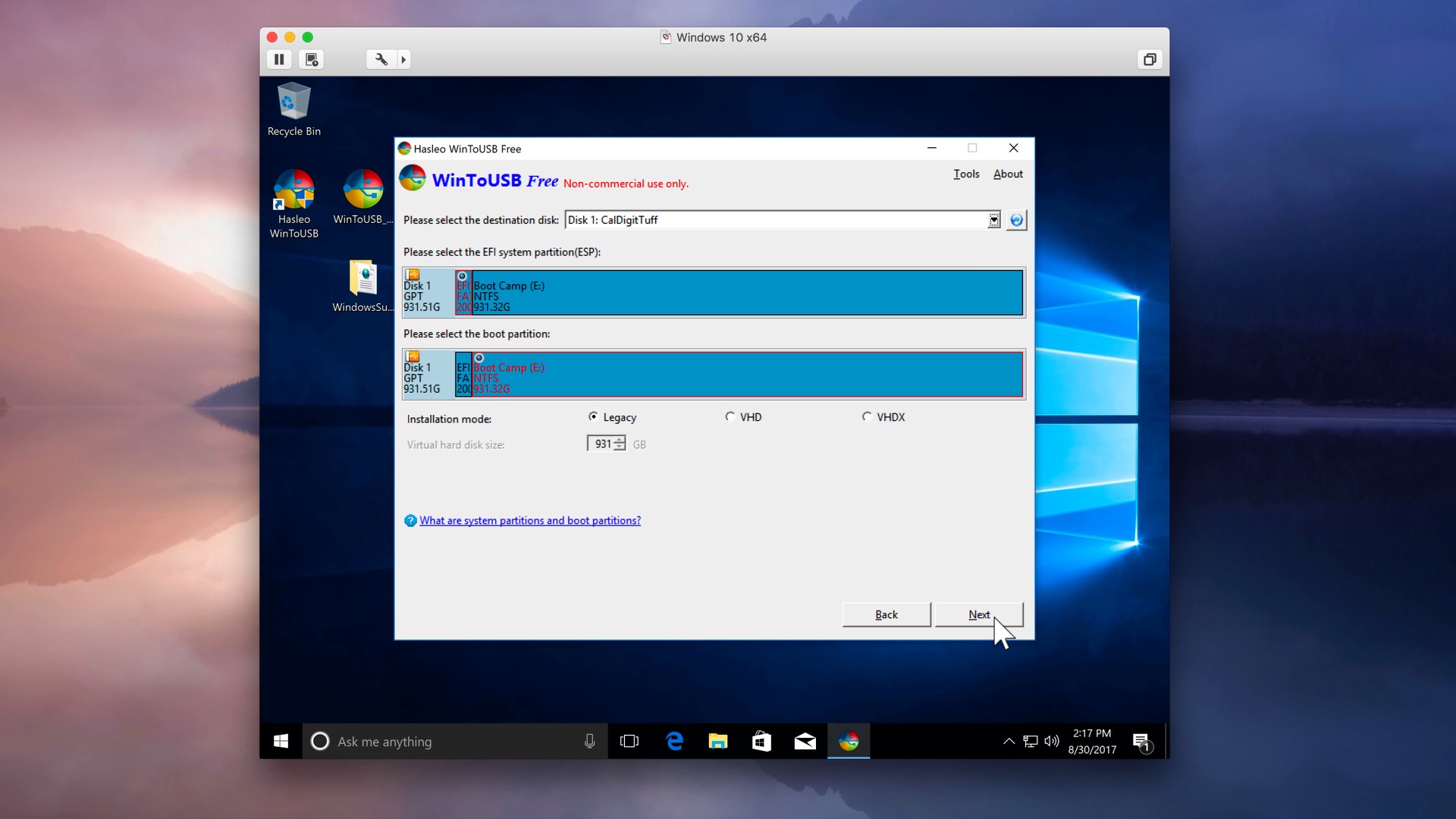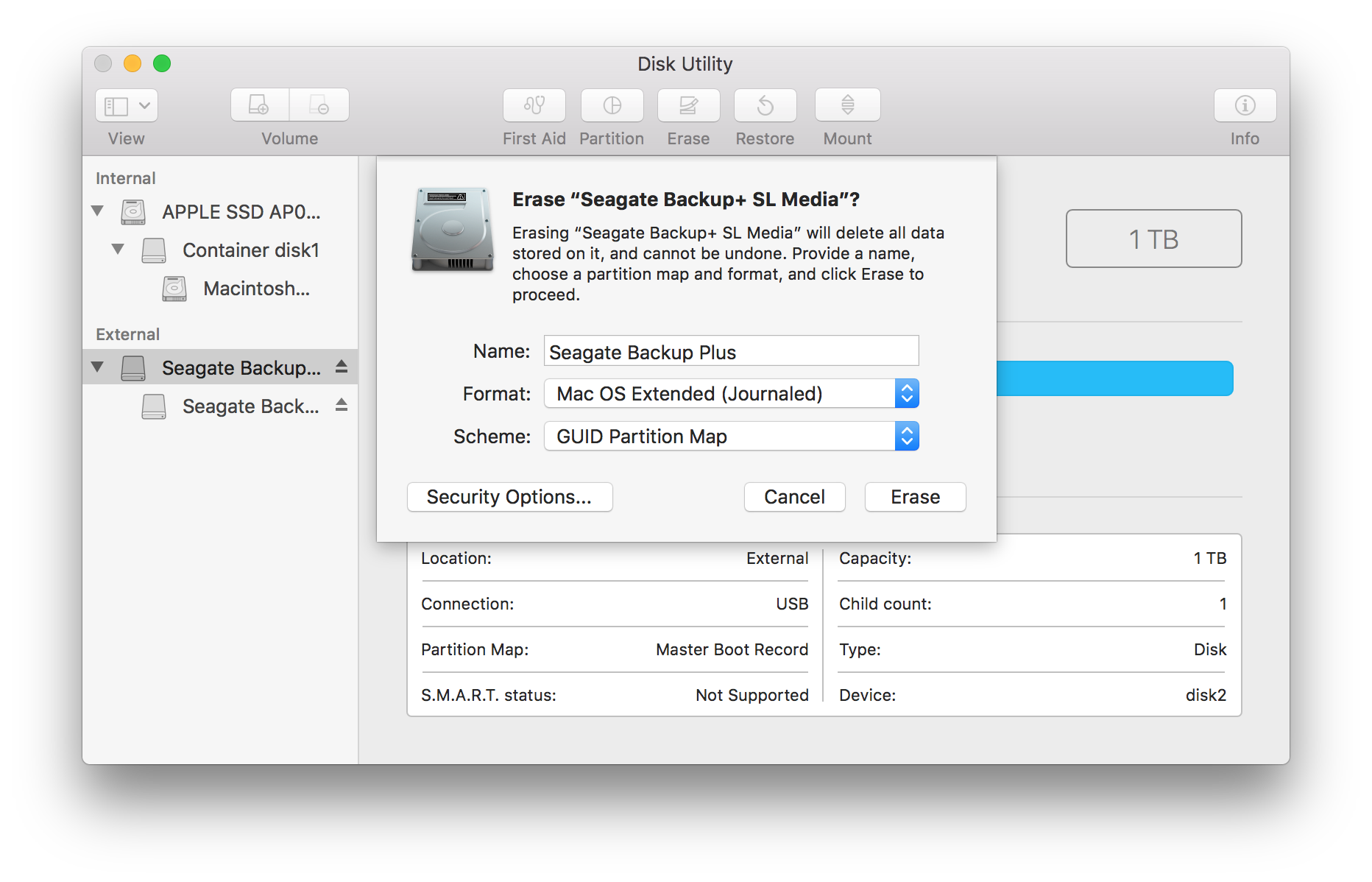Mac Os 10.11.6 Can't Find Hard Drive In Finder
- Mac Os 10.11.6 Can't Find Hard Drive In Finder Download
- Mac Os 10.11.6 Can't Find Hard Drive In Finder Free
- Mac Os 10.11.6 Can't Find Hard Drive In Finder System
Jul 02, 2019 The issue is exactly as described by James. Except that the setup here is actually way simpler. Just one hard drive with two partitions (C: and D inside of the Windows VM. I can guarantee until some point last year I was perfectly able to access the D: drive from macOS side. But today not any longer. Only C: drive appears in Finder. Jul 25, 2016 Major hard drive cleaning. One of the reasons a Mac gets slow is a full hard drive. To find out how cluttered yours is, click on the main Apple menu in the top left corner and choose About This Mac Storage. If you see the top bar getting full, like in the.
Reinstall from macOS Recovery
macOS Recovery makes it easy to reinstall the Mac operating system, even if you need to erase your startup disk first. All you need is a connection to the Internet. If a wireless network is available, you can choose it from the Wi-Fi menu , which is also available in macOS Recovery.
Can't delete a file in the trash on OSX 10.11.6 I use a Mac running OSX El Capitan = UNIX user the hood. After rearranging files on an external hard drive, I ended up with a folder in the trash containing a file called 'INITPicker 2.0'. Jul 15, 2020 Reason Mac Can’t find your Hard Drive? Resolution of the Issue? Connector Issue: You may have not connected the hard drive correctly to your MacBook or iMac USB Port. Or, the connecting cables may have got damaged, or the connecting port may be non-functional. From the 'General' tab, place a check next to 'Hard disks' - this will make your hard drive visible on the Desktop. From the 'Sidebar' tab under 'Devices' again place a check next to 'Hard disks' - this will put your hard drive in the sidebar of any finder window, and should also add it. Dec 31, 2018 If you want to keep a Mac connected to a network drive, even after restarting, the easiest way to do this is to follow the three steps above then add these: Hit the Apple menu, then System Preferences Users & Groups; From here, select Login Items and click + to add a new item; Find your network drive and click Add, then close the window. Oct 02, 2018 If you can't get access to another Mac, then you need to buy a drive from online - That will help us to know whether it is hardware or software. The processor, memory etc should be fine and it is the hard drive causing it, due to either hardware issue or complete OS.
1. Start up from macOS Recovery
To start up from macOS Recovery, turn on your Mac and immediately press and hold one of the following sets of keys on your keyboard. Release the keys when you see an Apple logo, spinning globe, or other startup screen.
Command (⌘)-R
Reinstall the latest macOS that was installed on your Mac (recommended).
Option-⌘-R
Upgrade to the latest macOS that is compatible with your Mac.
Shift-Option-⌘-R
Reinstall the macOS that came with your Mac, or the closest version still available.
You might be prompted to enter a password, such as a firmware password or the password of a user who is an administrator of this Mac. Enter the requested password to continue.
When you see the utilities window, you have started up from macOS Recovery.

2. Decide whether to erase (format) your disk
You probably don't need to erase, unless you're selling, trading in, or giving away your Mac, or you have an issue that requires you to erase. If you need to erase before installing macOS, select Disk Utility from the Utilities window, then click Continue. Learn more about when and how to erase.

3. Install macOS
When you're ready to reinstall macOS, choose Reinstall macOS from the Utilities window. Then click Continue and follow the onscreen instructions. You will be asked to choose a disk on which to install.
- If the installer asks to unlock your disk, enter the password you use to log in to your Mac.
- If the installer doesn't see your disk, or it says that it can't install on your computer or volume, you might need to erase your disk first.
- If the installer is for a different version of macOS than you expected, learn about macOS Recovery exceptions.
- If the installer offers you the choice between installing on Macintosh HD or Macintosh HD - Data, choose Macintosh HD.
Please allow installation to complete without putting your Mac to sleep or closing its lid. During installation, your Mac might restart and show a progress bar several times, and the screen might be empty for minutes at a time.
If your Mac restarts to a setup assistant, but you're selling, trading in, or giving away your Mac, press Command-Q to quit the assistant without completing setup. Then click Shut Down. When the new owner starts up the Mac, they can use their own information to complete setup.
Mac Os 10.11.6 Can't Find Hard Drive In Finder Download
macOS Recovery exceptions
The version of macOS offered by macOS Recovery might vary in some cases:
- If macOS Sierra 10.12.4 or later has never been installed on this Mac, Option-Command-R installs the macOS that came with your Mac, or the closest version still available. And Shift-Option-Command-R isn't available.
- If you erased your entire disk instead of just the startup volume on that disk, macOS Recovery might offer only the macOS that came with your Mac, or the closest version still available. You can upgrade to a later version afterward.
- If your Mac has the Apple T2 Security Chip and you never installed a macOS update, Option-Command-R installs the latest macOS that was installed on your Mac.
- If you just had your Mac logic board replaced during a repair, macOS Recovery might offer only the latest macOS that is compatible with your Mac.
Mac Os 10.11.6 Can't Find Hard Drive In Finder Free
If you can't get macOS Recovery to offer the installer you want, you might be able to use one of the other ways to install macOS.
Mac Os 10.11.6 Can't Find Hard Drive In Finder System
Other ways to install macOS
- You can also install macOS from the App Store or Software Update preferences. If you can't install macOS Catalina, you might be able to install an earlier macOS, such as macOS Mojave, High Sierra, Sierra, El Capitan, or Yosemite.
- Or create a bootable installer disk, then use that disk to install macOS on your Mac or another Mac.